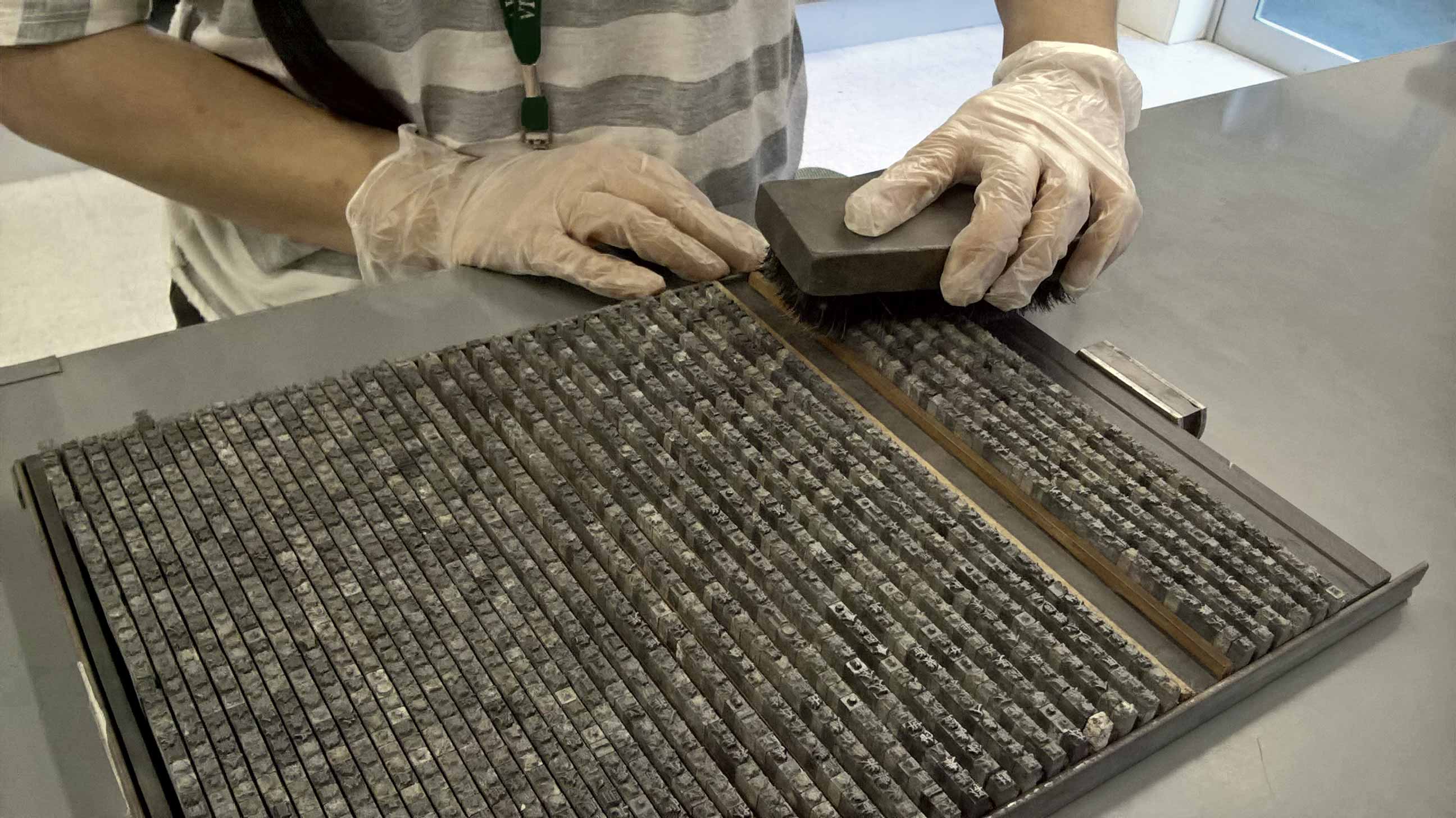Get involved
Wai-te-ata Press cares for New Zealand's only collection of Chinese-language metal letterpress type. We are now seeking volunteers to help restore this collection for future community use.
Preparing the Chinese heritage type collection for future studio use requires significant restoration work.
First, when the collection arrived in 2016, the Wai-te-ata Press team needed to understand the material the types are made of. Scanning electron microscopy (SEM) analysis helped determine the chemical composition of the metal alloy, and the viability of the type for future use.
Then, an amount of loose type needed to be sorted. Once organised by size, each piece of loose type was photographed under a microscope to populate a database.
Thirdly, stored in non-weathertight conditions for almost three decades, some of the wooden type cases arrived in states of disrepair. To use the Chinese heritage types again, it is necessary to transfer and organise the pieces of metal type into new type cases. This piece of work is currently underway, with weekly community type cleaning sessions on Wednesday afternoons.

Using a scanning electron microscope to find out what our heritage types are made from, and to tell the story of their use.

From crate to archive—sorting and cleaning the heritage types, and creating a database.

Learn more about the challenges of transferring heritage types to new type cases.